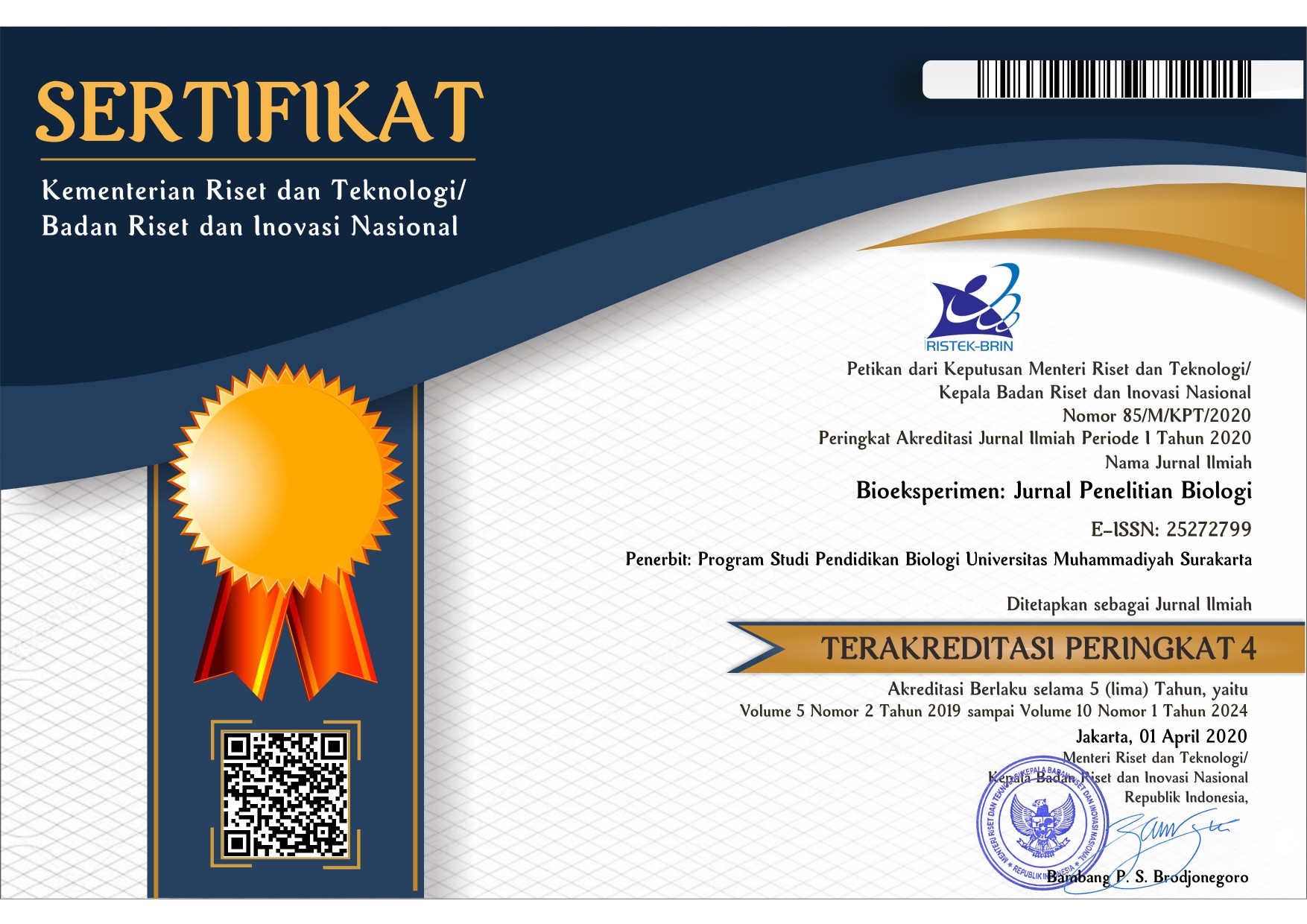The Percentage of Epiphytes Cover on The Seagrass Beds in Sepanjang Beach, Indonesia
Vina Listiawati(1*), Siti Naily Rohmah(2), Dheny Choirul Alfan(3)(1) Department of Biology Education, Universitas Muhammadiyah Surakarta
(2) Department of Biology Education, Universitas Muhammadiyah Surakarta
(3) Department of Biology Education, Universitas Muhammadiyah Surakarta
(*) Corresponding Author
Abstract
Keywords
Full Text:
PDFReferences
Borowitzka, M.A., P.S. Lavery, and M. van Keulen. 2006. Epiphytes of Seagrasses. In: Larkum,A.W.D., R.J. Orth, and C.M. Duarte (eds) Seagrasses: biology, ecology and conservation, pp441-461. Springer, Dordrecht.
Cornelisen, C.D., and F.I.M Thomas. 2002. Ammonium uptake by seagrass epiphytes: Isolation of the effects of water velocity using an isotope label. Limnology and Oceanography vol. 47, pp1223–1229.
Eckrich, C.E., and J.G. Holmquist. 2000. Trampling in a seagrass assemblage: direct effects,response of associated fauna, and the role of substrate characteristics. Marine Ecology Progress Series vol. 201, pp 199-209.
Heijs, F.M.L. 1984. Annual biomass and production of epiphytes in three monospecific seagrass communities of Thalassia hemprichii (Ehrenb.) Aschers. Aquatic Botany vol. 20, pp 195–218.
Herrera-Silveira, J.A., J. Cebrian, J. Hauxwell, and P.R. Ramirez-Ramirez. 2010. Evidence of negative impacts of ecological tourism on turtlegrass (Thalassia testudinum) beds in a marine protected area of the Mexican Caribbean. Aquatic Ecology vol. 44 pp 23-31.
Jacobs, R.P.W.M., P.M. Hermelink, and G. van Geel. 1983. Epiphytic algae on eelgrass at Roscoff,France. Aquatic Botany vol. 15, pp 157– 173.
Long, W.J.L., R.G. Coles and L.J. McKenzie LJ. 1996. Deepwater seagrasses in northeastern Australia—How deep, how meaningful? In: Kuo, J., R.C. Phillips, D.I. Walker, and H.
Kirkman (eds) Seagrass Biology, pp 41–50. University of Western Australia, Perth.
McKenzie, L.J., S.J. Campbell, and C.A. Roder. 2001. Seagrass-watch: manual for mapping & monitoring seagrass resources by community (citizen) volunteers, 100pp, QFS, NFC, Cairns.
Patriquin, D. 1973. Estimation of growth rate, production and age of the marine angiosperm Thalassia testudinum Koenig. Caribbean Journal of Science vol. 13, pp 111–123.
Tanner, J.E., M. Theil, and D. Fotheringham. 2014. Seagrass Condition Monitoring: Encounter Bay and Port Adelaide. SARDI Aquatic Sciences, Adelaide.
Article Metrics
Abstract view(s): 870 time(s)PDF: 619 time(s)
Refbacks
- There are currently no refbacks.








